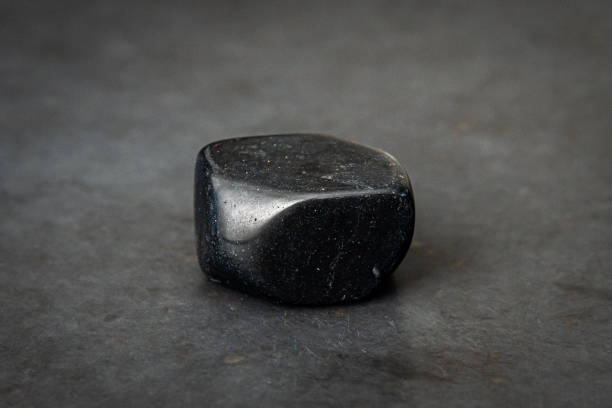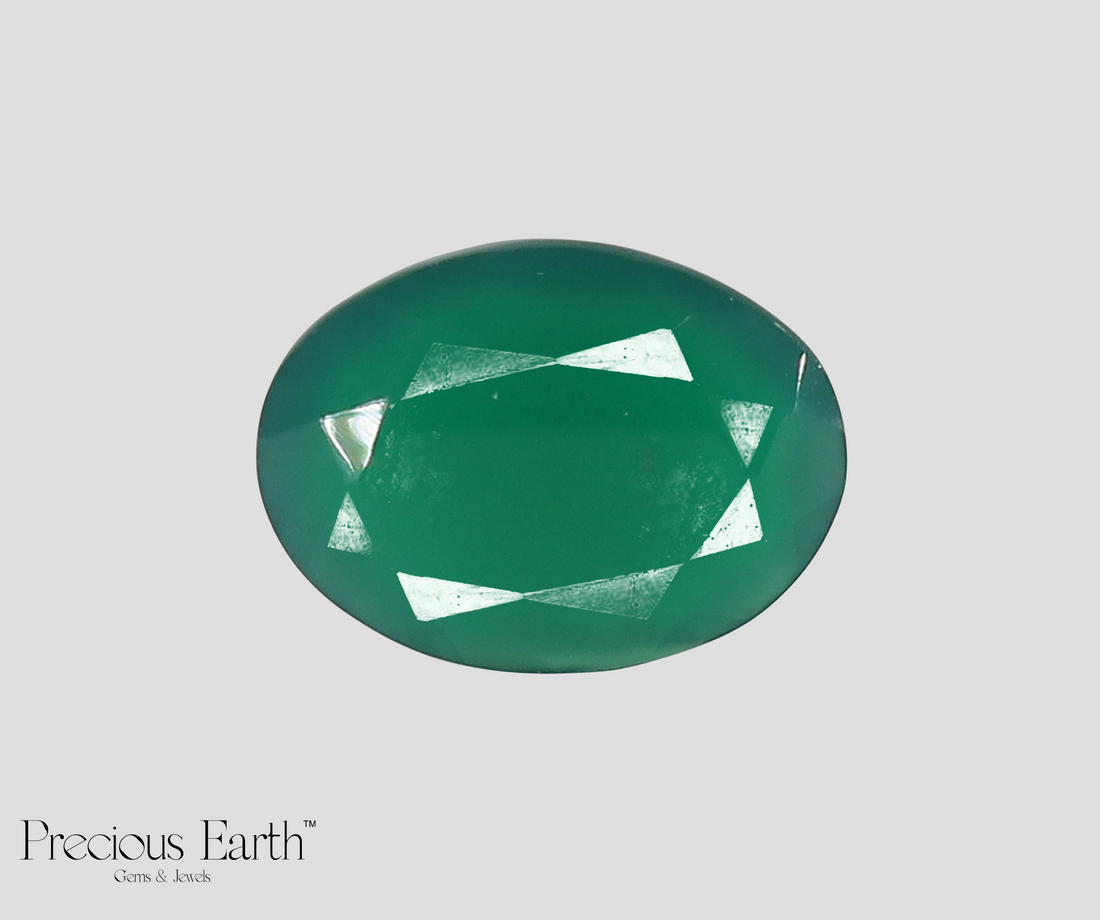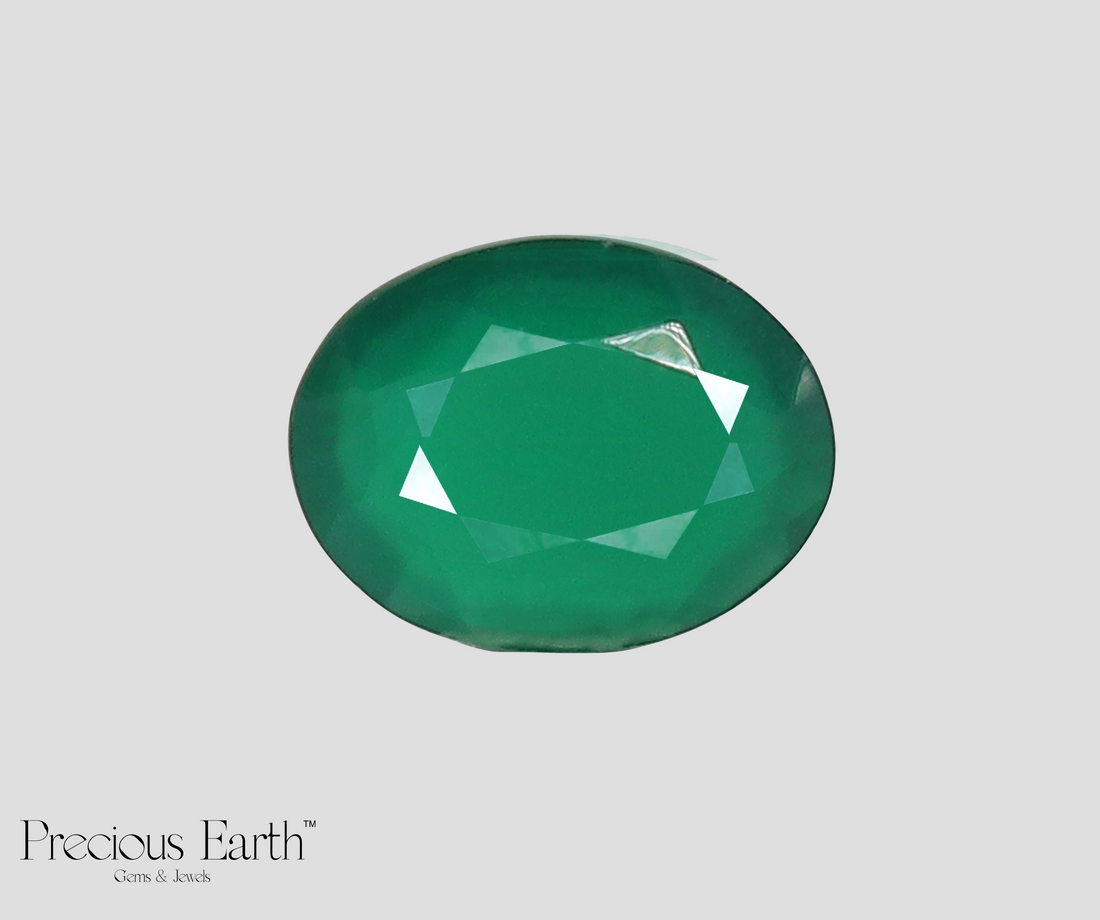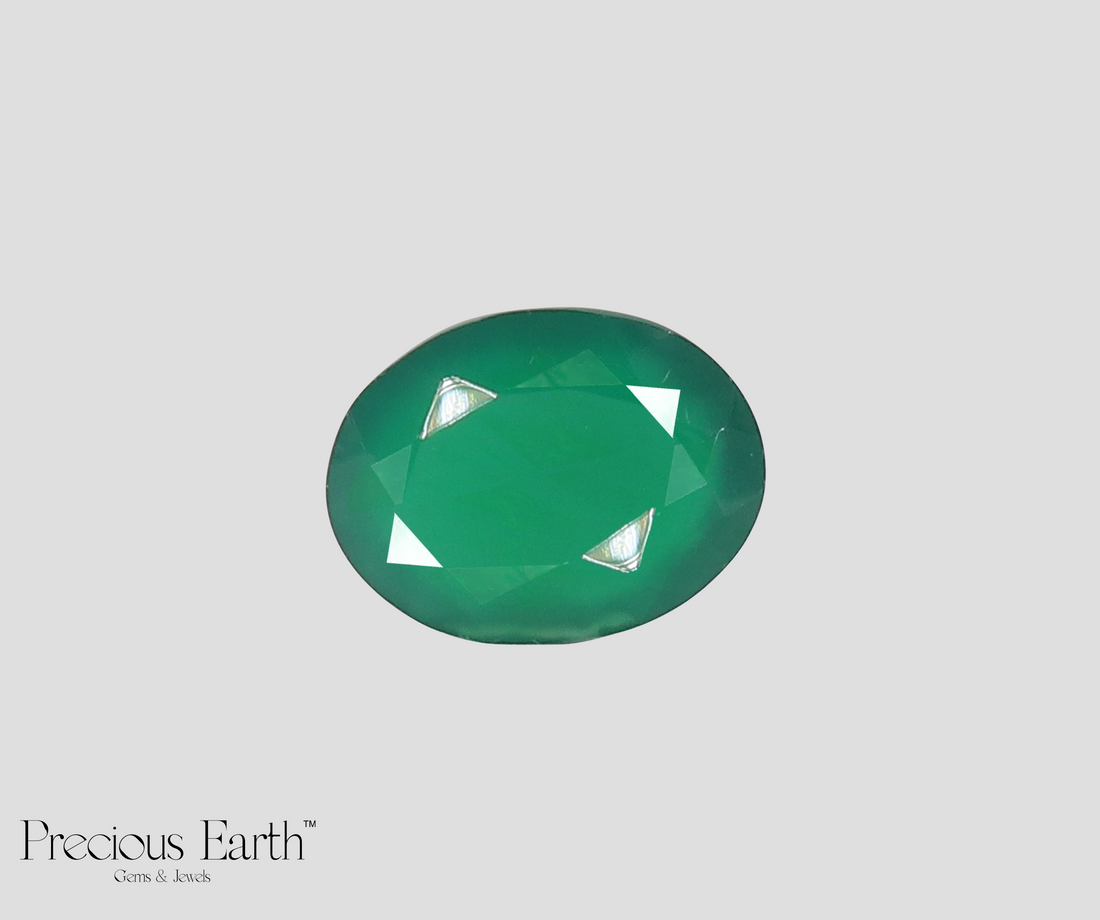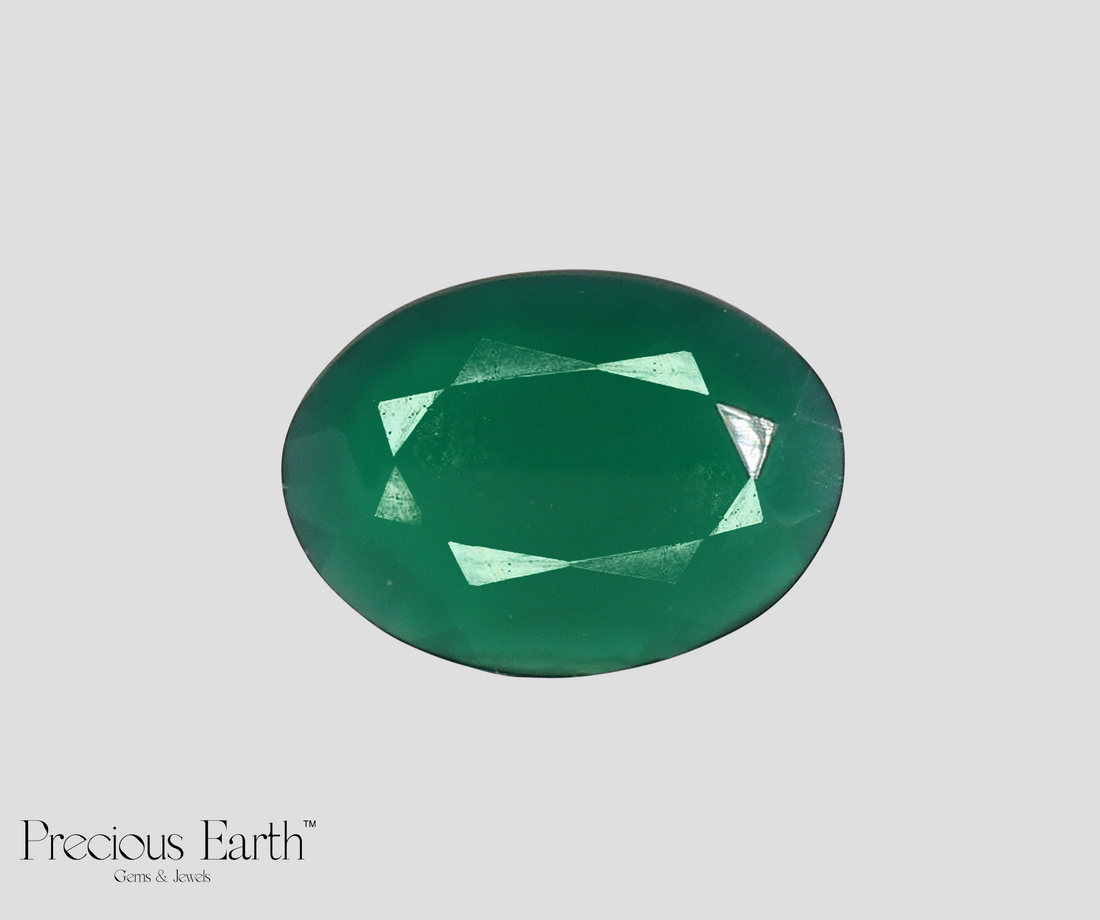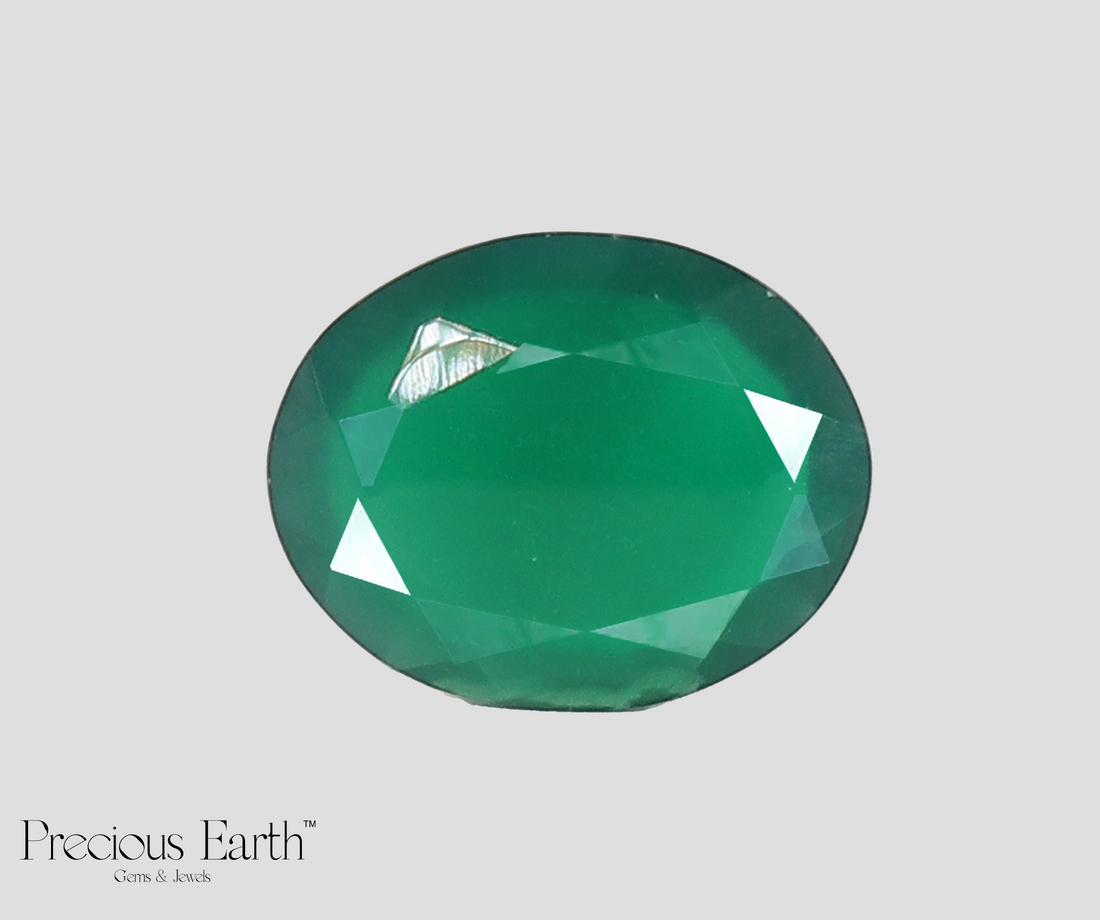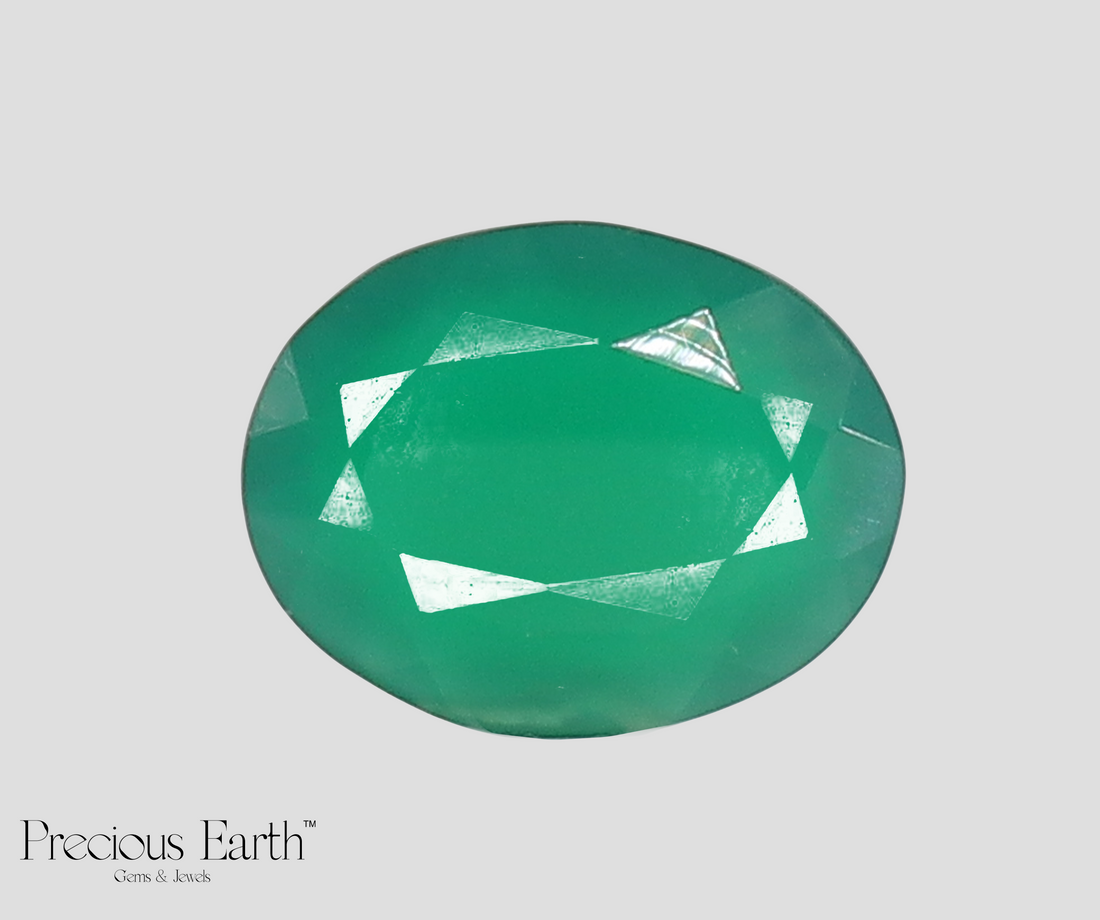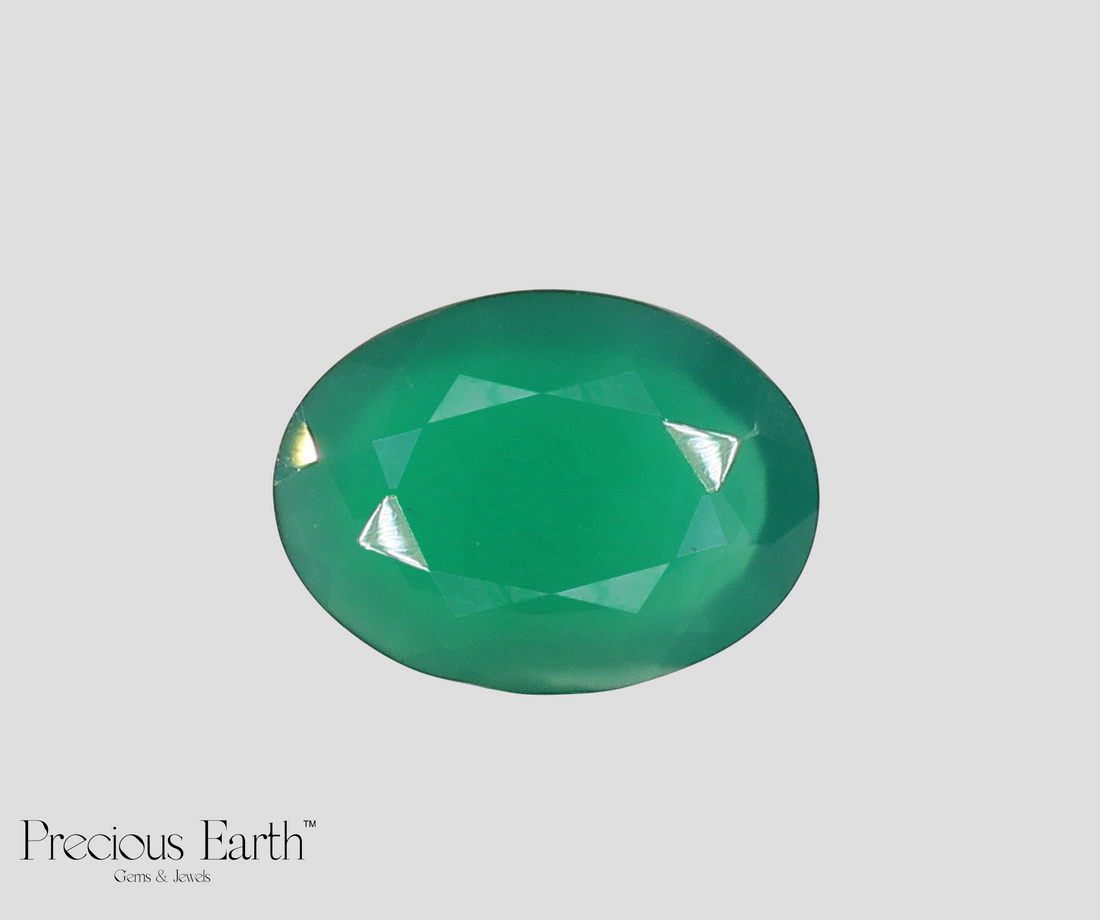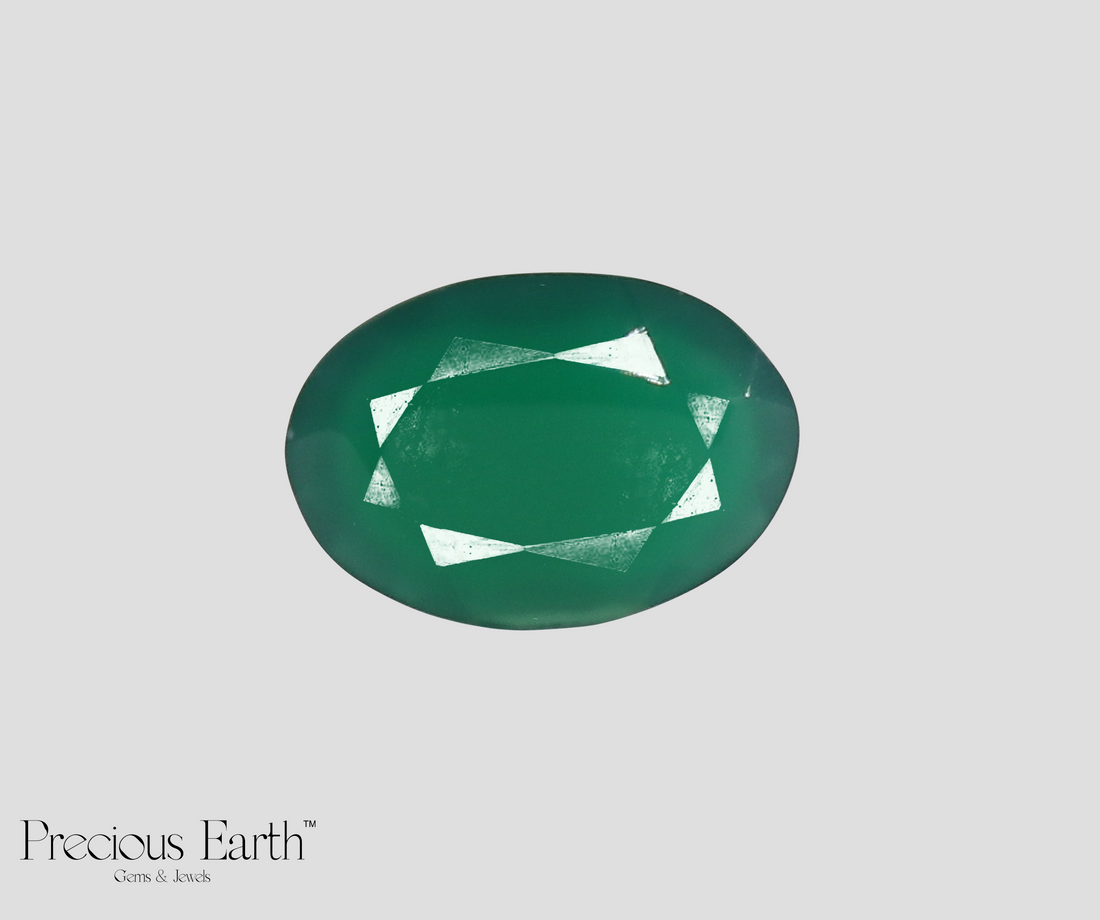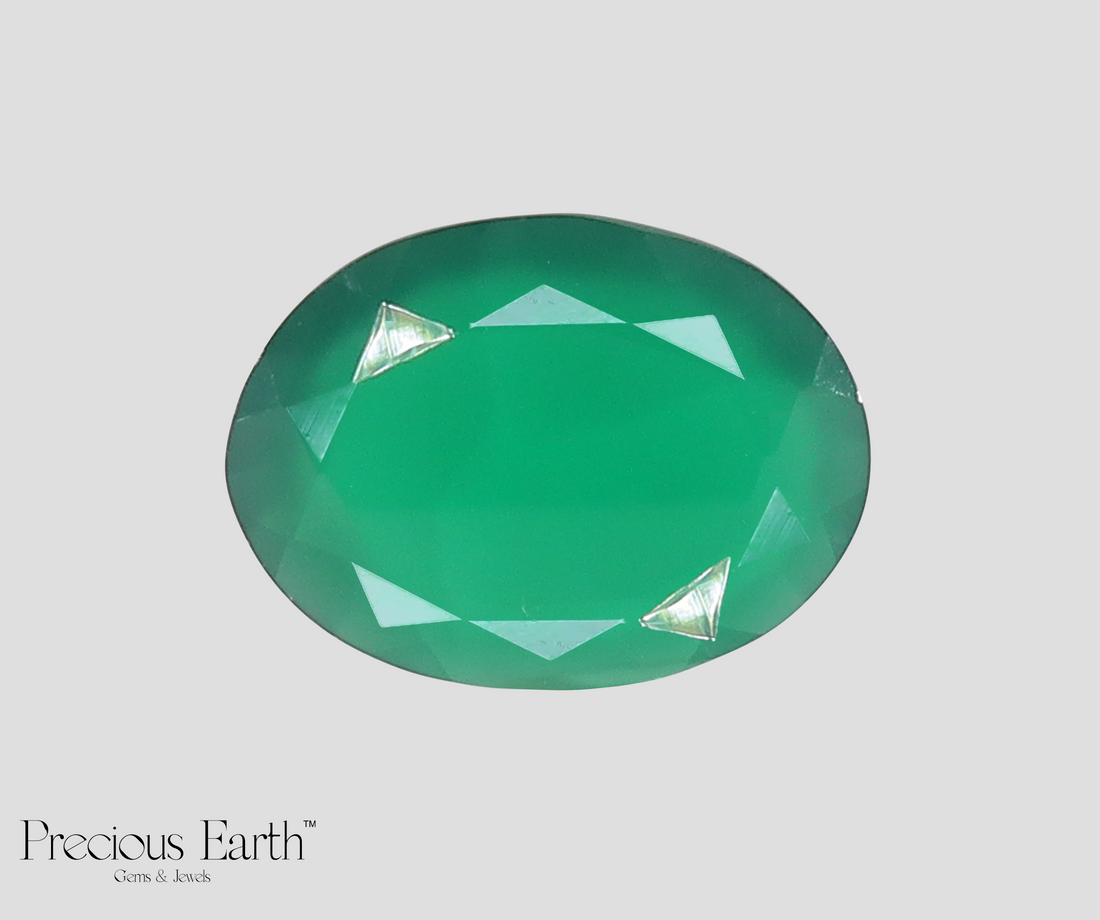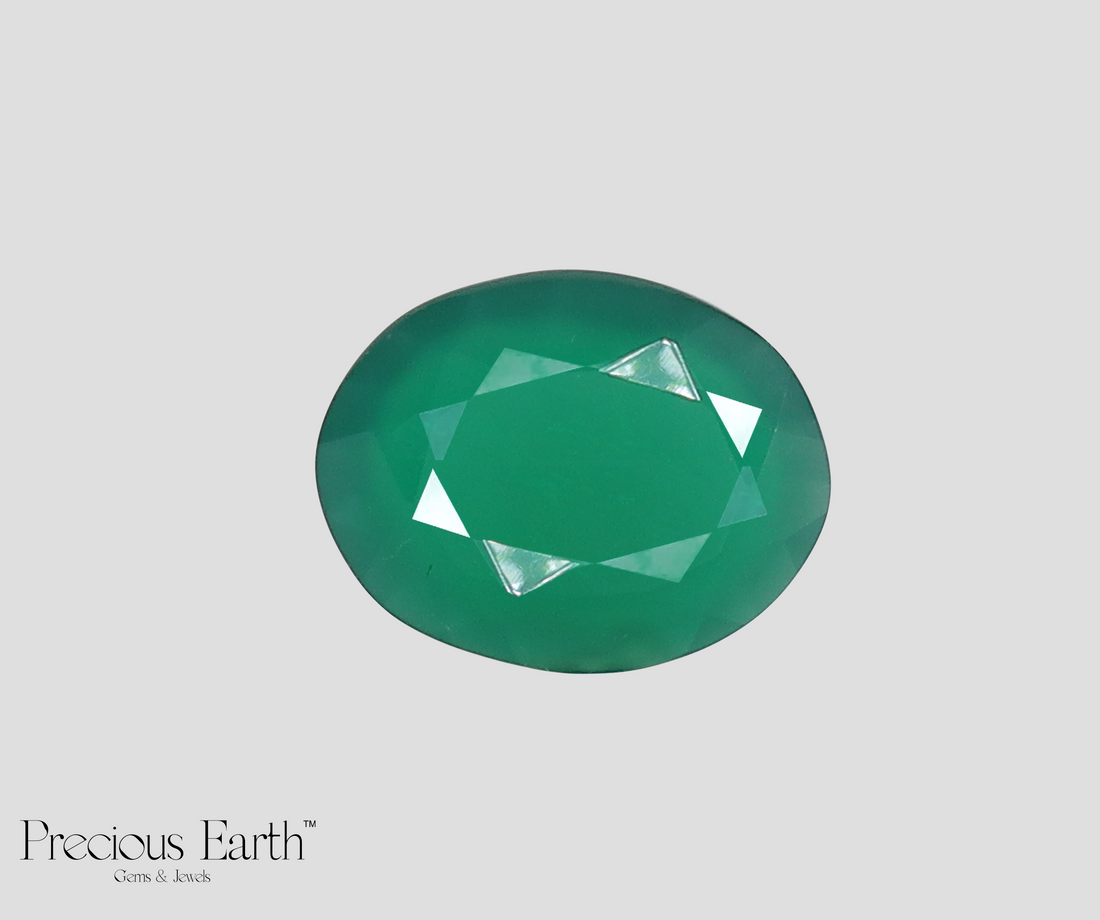For centuries, artisans have transformed the captivating onyx gemstone (chalcedony-quartz) into intricate cameos and stunning jewellery. Cherished for its deep, rich color and timeless elegance, the onyx stone offers a unique appeal whether faceted or polished.
Renowned for its striking black and white bands, onyx is a variety of chalcedony, a cryptocrystalline form of quartz. It is characterized by parallel bands of color, ranging from pure white to deep black, with shades of red, brown, green, and gray in between. Onyx is ideal for carving and creating jewellery, moreover, its banded structure reveals beautiful color contrasts when carved, enhancing its visual appeal.
The gemstone has significant cultural value, having been used since ancient Greece and Egypt. Many cultures believe in its protective qualities, adding to its allure as a gem with a rich past. Notable varieties include the red-orange carnelian stones, green onyx, and sardonyx, featuring white and brown bands. Historically, the Romans used the term "onyx" for various stones, including alabaster, chalcedony, and what we now call onyx marble. Additionally, onyx is one of the 12 stones mentioned in the Bible (Exodus 28:20; 39:13), adorning the breastplate of Yahweh’s high priests.
This guide will provide you with comprehensive information on onyx stones, offering all the details you need to appreciate and understand this remarkable gemstone.

Cut & polished onyx cabochons
1. Onyx: Formation & Occurrence
This gemstone forms through a process of precipitation and evaporation in caves or other geological formations. Groundwater or spring water containing dissolved silica (SiO2) seeps into cracks and cavities in the rock. As the water evaporates, the silica is deposited and slowly builds up in layers, creating the distinctive banded appearance of onyx. The different colored bands are formed by variations in mineral content and water conditions during the formation process. Common colors include black, white, brown, red, orange, yellow, green, blue, and purple. The parallel banding is a key distinguishing feature of onyx, setting it apart from the more randomly curved banding found in agate, another variety of chalcedony.
2. Where Is Onyx Found?
Onyx can be found in various regions across the globe, each contributing to its allure and diversity. From the vibrant hues of Brazil and India to the earthy tones of Mexico and Pakistan, onyx deposits grace the earth's surface, waiting to be discovered and transformed into stunning works of art and jewelry. Pakistan is known for high-quality black and white onyx, while Brazil is an important source of brown and yellow onyx. India produces a range of onyx colors, including black, white, and green.
The United States, with notable sources in Colorado, Utah, California, Arizona, and Oregon, adds to the worldwide tapestry of onyx. Other countries like Greece, Yemen, Argentina, Indonesia, Iran, Madagascar, Australia, and parts of Africa offer their unique variations of this mesmerizing stone.
3. Color Range of Onyx
The most common type of onyx has two layers: a black base and a white upper layer. However, some onyx varieties display parallel bands of different colors. Onyx colors range from pure white to deep black, with shades including red, brown, green, and gray. These colors result from different mineral impurities within onyx's crystalline structure.
- Black Onyx: Known for its intense color and sheen, black onyx is highly sought after in jewellery and interior design.Black onyx jewelry, like earrings, statement neckpieces, bracelets, and more complement virtually every outfit.
- Green Onyx: This variety ranges from light to dark green, is associated with balance, healing, and growth, and is highly prized in jewelry, such as a pair of earrings, or bracelets.
- White Onyx: Also called marble onyx, this variety features pure white or cream colors, valued for its elegance and light-reflecting properties, often used in architecture and interior design.
- Red Onyx or Brown Onyx: These types exhibit warm, earthy tones, ranging from rusty red to chocolate brown, often characterized by contrasting bands or veins.
 Cut & polished green onyx stones
Cut & polished green onyx stones
4. Common Inclusions in Onyx
Onyx stones generally don't have inclusions, boasting high clarity. Since onyx is typically translucent to opaque, it doesn't receive a clarity grade but can still be considered "eye-clean," meaning no inclusions are visible without magnification. High-quality onyx should have a well-polished, reflective surface, as cracks or scratches can significantly lower its value.
However, there are a few rare instances where you might find inclusions in onyx:
- Chalcedony Inclusions: Since onyx forms from chalcedony, sometimes there might be microscopic inclusions of other chalcedony varieties like agate within the layers. These inclusions would be very subtle and wouldn't significantly affect the overall appearance.
- Fractures & Cavities: Occasionally, onyx can develop fractures or cavities during formation or processing. These would be considered flaws and could affect the value of the stone.
Overall, the lack of inclusions is a defining characteristic of good-quality onyx. If you see an onyx with visible inclusions, it might be a different type of banded stone like agate or jasper.
5. Common Treatments & Enhancements of Onyx
Natural black onyx is rare and not commonly sold, so grey chalcedonies are often treated to achieve the desired black hue. These treated stones, sharing the same chemical structure as natural black onyx, are considered genuine.
- Dyeing: Grey chalcedonies are dyed by soaking in a sugar solution, which penetrates the stone's surface cracks. The stone is then treated with sulfuric or hydrochloric acid to carbonize the sugar, creating a black hue. This treatment is permanent and stable, preserving the stone's durability and structure.
- Heat treatment: In some cases, onyx is heat-treated to remove unwanted tints, and exposed to extreme temperatures until it changes color. This treatment, like dyeing, is also stable and permanent.
| Mineral | Chalcedony (cryptocrystalline Quartz) |
|---|---|
| Colour Span | Black, white, red, brown, green, gray, yellow, etc. |
| Popular Origins | Brazil, India, Pakistan, the United States (Colorado, Utah), Greece, Yemen, Argentina, Indonesia, and parts of Africa |
| Mohs Hardness | 6.50 - 7.00 (on a scale of 10) |
| Common Treatments | Dyeing, Heat |
| Birthstone | Variable |
Onyx - A Quick Snapshot
6. Evaluating the Quality of Onyx
When assessing the quality of onyx, several factors come into play - particularly the 4Cs:
- Color: The most prized color in onyx is a deep, uniform black, consistent throughout the stone without lighter or darker patches. The presence of brown, grey, or white streaks or bands decreases its value. While pure black is ideal, high-quality onyx may also have minimal white veining or sardonyx bands with alternating white and black layers, adding visual interest without detracting from the overall black appearance.
- Clarity: High-quality onyx should boast a smooth, well-polished surface with a high degree of reflectivity. This allows the stone to capture light and showcase its depth and richness.
- Cut: The cut of onyx plays a crucial role in showcasing its dramatic color and opaqueness. Onyx is typically cut into cabochons (smooth, polished stones) or beads rather than faceted, as it lacks the sparkle and brilliance of gemstones like diamonds or sapphires.
- Carat Weight: Onyx is generally found in larger carat weights as compared to many other gemstones. Generally, small onyx stones weigh less than 1 carat and are used in earrings, rings, and other small jewelry pieces. Medium-sized stones range from 1 to 5 carats and are versatile for various jewelry designs. Large onyx stones weigh more than 5 carats and are typically used in statement pieces, offering a rare and valuable option for jewelry enthusiasts.
7. How Much Does Onyx Cost?
Black onyx is the most common and inexpensive variety, typically priced between $2 - $7 per carat. On the other hand, colors like green or white can be pricier, ranging from $2 to $20 per carat. The price of onyx is influenced by factors such as quality, including cut, clarity, and size. Stones that are well-cut and flawless command higher prices, while larger stones are generally more expensive. Additionally, whether the onyx has undergone treatments like dyeing can also affect its value, with lab-certified natural stones typically being more valuable than treated ones.

Onyx is a pocket-friendly gemstone
8. Onyx in Astrology
Onyx is the birthstone for those born under Leo or Capricorn, believed to help them master their destinies. The birthstone is believed to provide confidence, center energy during stress, and aid in wise decision-making. Black onyx is thought to offer protection, especially during travel, and helps combat fears and heal emotional wounds.
One legend says onyx originated when Cupid gave the goddess Venus a manicure by the Indus River. The shavings from her nails fell into the sacred river, transforming into onyx. From this myth, onyx is considered a protective stone in battles. In classical ceremonial magic, onyx with carvings of Mars or Hercules was carried for bravery. Black onyx not only protects but also defends against negative energy. In Indian Vedic astrology, it is believed to maintain harmonious relationships and prevent conflicts.
With its vivid hues, healing properties, and historical significance, onyx is among nature's most fascinating creations. Whether exploring its earthly and celestial origins, ancient myths, or adorning yourself with this remarkable stone, onyx offers endless allure. Discover a stunning collection of certified natural stones like sapphire, amethyst, opal, garnet, peridot, and more at Precious Earth, ensuring a genuine purchase with a lifetime returns policy.

